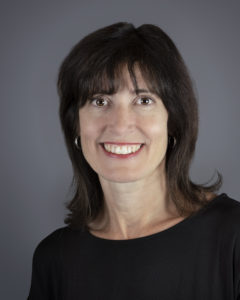Just when you thought they need to change.
Posted on 29. Jun, 2016 by Susan Wright in Conscious Leadership
It’s easier to judge or see the flaws in others than it is in ourselves. As a leader you have expectations, you want results and sometimes your people might not live up to your expectations! Well guess what? It’s not their job to change, it’s yours.
That’s a tough ask when you’re the leader, for aren’t you in the role due to your track record, experience and credibility? Yes, but as executive coach and author, Marshall Goldsmith suggests in his book What Got You Here Won’t Get You There, often the characteristic that got you to where you are are, can in fact be the one flaw that keeps you and your team from where you want to be. Leading isn’t for the faint of heart as it requires a level of awareness and confidence, that even you at times may question in yourself.
 As the key driver behind many results, you also play a key role in influencing and engaging others.  In doing so, it may be less obvious to see personal behaviours, or dare I say, flaws, that get in the way of engaging and leading others.  We all have blind-spots and so do those you lead.  So, if it’s not easy for you to see your own short-comings, and even if you do, it’s a far greater stretch to change them. Recognizing your own judgment and further reflecting on self, requires learning, trust and humility.
As the key driver behind many results, you also play a key role in influencing and engaging others.  In doing so, it may be less obvious to see personal behaviours, or dare I say, flaws, that get in the way of engaging and leading others.  We all have blind-spots and so do those you lead.  So, if it’s not easy for you to see your own short-comings, and even if you do, it’s a far greater stretch to change them. Recognizing your own judgment and further reflecting on self, requires learning, trust and humility.
Humility doesn’t equate to being weak. It means you are a leader who can first look within before laying judgment or expectations elsewhere. Looking within may start with a few questions like: What am I assuming? What haven’t I made clear? What have I communicated or not? Get the critical information and insight you need before expecting full understanding and commitment from others. Don’t get me wrong, there are people who’s actions or performance may be in considerable question but more often than not there’s a gap in perception, expectations, understanding or the less obvious, values.
In leading self, start by shining the light on your own capabilities and then you will be better prepared to address it in others. This can be done in formal (360’s) and less formal (observing and asking questions) ways.  Even when your focus shifts to the capabilities and performance of others, the questions still begin with you first. What might I do differently? What is my intention? What am I not seeing?
Many legitimate excuses can limit your development: from extreme busy, no time, too tired, to an organizational culture of get the job done (the what, not the how). Add ambiguity and changing circumstances in the mix, there is no wonder leaders find it challenging to find personal time to reflect and learn. However, increased complexity and change require significant self management, character and self-awareness: all part of LEADS Self.
To lead self is a discipline. Â Becoming aware of your own strengths and blind-spots can enable you to make better decisions, engage others and collaborate effectively to get the job done well.
In leadership, learning to listen well and ask questions both for yourself and others is key; why a professional coach can become a valuable ally in your success as a leader. Coaches are trained to listen and ask powerful questions and can see your leadership context from a objective lens, providing a supportive frame to further understand both them and you!
Next time you hear that inner judge creep-in or jump quickly to point out flaws in others, stop and pay attention (no finger pointing please). Instead consider asking, What might I need to change? As a leader you have significant opportunities to build and create positive change and growth – for yourself, your people and the bottom line.




